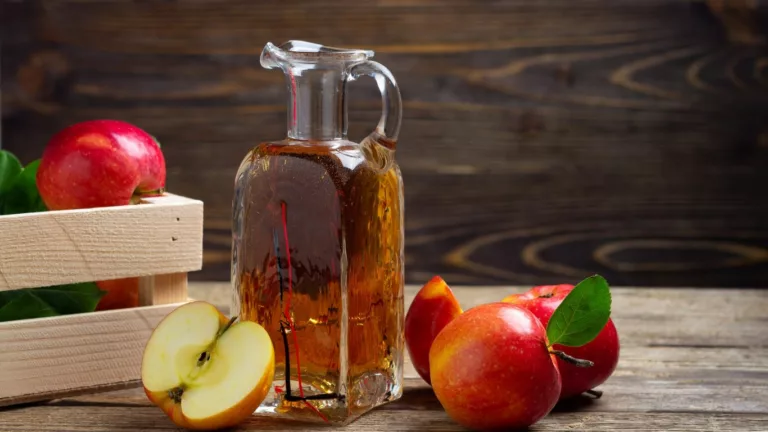How Spicy Foods Worsen GERD: Understanding the Impact on Your Health
Dealing with GERD (Gastroesophageal Reflux Disease) is no small feat, and if you’re someone who loves spicy food, you’ve probably noticed that certain meals can make your symptoms worse. As someone who’s been in the field of digestive health for quite a while, I’ve seen firsthand how spicy foods worsen GERD for many individuals. If you’re wondering why that fiery salsa or those extra hot wings seem to trigger your acid reflux, you’re not alone. Today, we’re diving into how spicy foods can aggravate GERD and what you can do to manage it without sacrificing your love for flavorful meals.
Understanding GERD and How It Affects Your Digestive System
Before we get into the specifics of spicy foods and GERD, let’s take a moment to understand what GERD actually is and how it affects your digestive system. GERD is a chronic condition where stomach acid flows back into the esophagus, causing symptoms like heartburn, chest pain, regurgitation, and difficulty swallowing. This happens when the lower esophageal sphincter (LES), the muscle at the end of your esophagus, weakens or relaxes inappropriately, allowing stomach contents to escape into the esophagus.
As you may already know, GERD can be triggered by a variety of factors. Common culprits include large meals, fatty foods, chocolate, citrus, and yes, spicy foods. While it might not be the case for everyone, for many GERD sufferers, spicy foods are a known trigger.
Why Spicy Foods Are a Problem for GERD Sufferers

So, what’s the deal with spicy foods? Well, there’s more to it than just the heat they bring to your taste buds. Spices like chili peppers contain a compound called capsaicin, which is responsible for the heat sensation. While capsaicin may offer some health benefits (like boosting metabolism or pain relief), it can also irritate the lining of the esophagus and stomach. For GERD sufferers, this irritation can lead to an increase in acid production, which worsens symptoms like heartburn and regurgitation.
In addition to the irritation caused by capsaicin, spicy foods can also relax the LES, making it easier for stomach acid to escape into the esophagus. The combination of acid reflux and esophageal irritation is a recipe for disaster when it comes to GERD. If you’ve ever experienced the burning sensation in your chest after eating something spicy, you’ve felt this firsthand.
Common Symptoms of GERD Triggered by Spicy Foods

If you have GERD, you’re likely familiar with the uncomfortable symptoms it brings. However, when spicy foods are involved, the symptoms can be even more intense. Here are some common symptoms you might experience after indulging in spicy meals:
- Heartburn: A burning sensation in the chest or throat is one of the most common symptoms triggered by spicy foods. It happens when stomach acid backs up into the esophagus.
- Regurgitation: The sensation of acid or food coming back up into the mouth or throat can also be exacerbated by spicy dishes.
- Chest Pain: Many people experience discomfort or pain in the chest after eating spicy foods, which can mimic the feeling of a heart attack (but it’s usually related to acid reflux).
- Hoarseness or Sore Throat: The irritation from acid can lead to a sore throat or hoarseness, especially if the acid reaches the vocal cords.
- Difficulty Swallowing: In some cases, the esophagus can become inflamed and narrow, making swallowing painful or difficult.
These symptoms can vary in severity depending on how much spicy food you consume and your personal sensitivity to capsaicin. If you find that spicy foods consistently worsen your GERD symptoms, it’s important to consider modifying your diet to avoid these triggers.
Personal Experience: How I Discovered the Link Between Spicy Foods and GERD

As a GERD expert, I’ve worked with countless individuals who struggle with managing their symptoms, but I also have my own personal experience to share. When I first began studying GERD in depth, I wasn’t always aware of how certain foods could impact the condition. As a lover of spicy cuisine, I found myself indulging in my favorite hot wings or spicy curries without thinking twice. But after a few weeks of regular consumption, I began to notice a sharp increase in my heartburn episodes. I realized that the spicier the food, the worse my GERD symptoms became. This personal experience helped me understand just how much spicy foods can aggravate the condition and how important it is for sufferers to identify their triggers.
As much as I enjoy the thrill of spicy dishes, I had to learn to cut back. That doesn’t mean I had to give up on flavor altogether—I just had to find alternatives that were gentler on my system. And that’s something I always encourage my patients to do: it’s not about completely eliminating all the foods you love, but rather about making mindful choices that work with your body.
How to Manage GERD While Enjoying Flavorful Foods
If you’re a spice lover and GERD sufferer, don’t worry—you don’t have to give up on flavorful meals entirely. There are plenty of ways to modify your diet and still enjoy delicious food without triggering your GERD symptoms. Keep reading in the next section where we’ll explore some tips and tricks for managing GERD while keeping your meals exciting.
How to Manage GERD While Enjoying Flavorful Foods
If you’re like me, giving up on flavorful foods completely just isn’t an option. Spicy foods might be a trigger for GERD, but that doesn’t mean you have to stop enjoying delicious, exciting meals altogether. With a few simple tweaks and thoughtful changes, you can manage your GERD symptoms without losing the essence of your favorite dishes. I’ve personally found that balance—it’s all about finding the right substitutes, making smarter food choices, and being mindful of portion sizes.

Spicy Alternatives That Won’t Irritate Your System
First off, let’s talk about substitutes. You don’t have to completely ditch flavor when managing GERD—it’s about being smart and choosing the right spices that are easier on the stomach. Some of the hottest peppers or ingredients, like cayenne or jalapeños, are notorious for triggering symptoms. But there are plenty of spices out there that can give you the flavor you’re craving without the fiery aftermath.
For example, consider using ginger or turmeric as alternatives. Both of these spices have anti-inflammatory properties, and while they may not have the same level of heat as chili peppers, they can still pack a punch in terms of flavor. I personally love using ginger in my stir-fries and teas—it adds a refreshing warmth without causing my GERD symptoms to flare up.
Cumin is another great option. It’s often used in Middle Eastern and Indian cuisine and offers a rich, earthy flavor that doesn’t irritate the stomach as much as hot peppers. If you miss the heat of peppers, you could also try paprika or coriander for a mild, yet flavorful kick. These spices can enhance your meals while keeping your digestive system happy.
Timing Your Meals for Better Digestion

Another key factor when managing GERD is meal timing. Many people with GERD experience more intense symptoms when they eat large meals late at night. So, if you’re used to having a spicy dinner right before bed, it might be time to rethink your eating schedule. Eating smaller, more frequent meals throughout the day can be a game-changer. This approach helps prevent your stomach from becoming overly full, which can trigger acid reflux. Try to eat your last meal at least three hours before you go to bed—this gives your stomach time to digest properly and minimizes the risk of acid backing up into your esophagus.
From personal experience, I can tell you that the evening meal is often the hardest to avoid spicy foods. I used to love winding down with a spicy bowl of chili, but it was often a recipe for disaster. Once I adjusted my eating times, I noticed a significant improvement in my symptoms. Now, I try to make my dinner earlier and keep it light, steering clear of the heavy spice that used to wreak havoc on my system.
Smart Cooking Tips to Keep GERD in Check
When it comes to cooking, there are plenty of little adjustments you can make that will have a big impact on how well your digestive system handles spicy foods. Here are some tips that I swear by, both from my personal experience and professional recommendations:
- Opt for Low-Fat Cooking Methods: Fatty foods can trigger GERD by relaxing the LES and increasing acid production. Choose cooking methods like grilling, baking, steaming, or roasting to keep your meals lighter.
- Limit Acidic Ingredients: Tomatoes, citrus, and vinegar are all common ingredients in spicy foods, but they can also contribute to acid reflux. Instead of using tomato-based sauces, try making a creamy sauce with yogurt or coconut milk for a smooth texture without the acidity.
- Use Herbs Instead of Spices: Fresh herbs like basil, parsley, and mint can add a fresh burst of flavor without the heat. I often use fresh herbs to season my dishes, especially when I’m craving something with a Mediterranean flair.
These small shifts in your cooking routine can help make spicy foods a lot more GERD-friendly. By focusing on the method of cooking and the ingredients you use, it’s easier to enjoy a range of dishes while keeping symptoms at bay.
Keeping Track of Your GERD Triggers

One of the best things you can do to manage GERD is to keep track of your triggers. Everyone’s body is different, and while spicy foods are a common trigger, there may be other foods or habits that are specific to you. Keeping a food journal can help you identify which meals or ingredients tend to worsen your symptoms. I’ve recommended this to many patients, and it’s always a game-changer.
When you write down what you eat and note when symptoms occur, it becomes easier to spot patterns. Maybe you’ll realize that certain types of cheese or specific fried foods are more problematic than others. The key is to be patient with yourself and track how your body responds to different foods over time.
Hydration: A Simple, But Powerful Solution
Don’t forget about hydration! Drinking plenty of water throughout the day can help neutralize stomach acid and improve digestion. It’s something that’s easy to overlook, but it’s one of the simplest strategies for managing GERD. I make sure to sip water regularly, especially between meals, to keep my system functioning smoothly. Just be sure not to drink too much water during meals, as this can increase the pressure in your stomach and exacerbate acid reflux.
Adjusting Your Lifestyle to Minimize GERD Flare-Ups
Managing GERD isn’t just about changing your diet—it’s about making lifestyle changes that can reduce symptoms and prevent flare-ups. Simple things like avoiding tight clothing around your stomach, elevating your head while sleeping, and reducing stress can make a big difference in how your body handles acid reflux. I’ve found that even small tweaks in my daily routine have helped me keep my GERD under control, and I always recommend these to my patients.
If you’re someone who loves spicy food but suffers from GERD, it’s possible to find a balance. By making the right adjustments to your diet and lifestyle, you can still enjoy flavorful meals while keeping your GERD symptoms in check. The key is finding what works best for you—and knowing that you don’t have to sacrifice the joy of good food in order to feel your best.
Case Studies & Real-Life Examples
Sometimes, the best way to understand how to manage GERD is through real-life examples. I’ve had the privilege of working with many individuals who have struggled with spicy food triggers. These case studies can provide insight into how different approaches work and how you can adapt them to your own situation.
Take my patient Laura, for instance. Laura loved spicy Mexican food—salsa, hot peppers, and everything that packed a punch. But over the years, her GERD symptoms had gradually worsened. She came to me, frustrated with how heartburn and regurgitation were ruining her enjoyment of meals. Through trial and error, we discovered that while she could tolerate some spices, the combination of hot salsa and deep-fried food was a major problem for her. By cutting back on fried foods and replacing hot salsa with a more mild, cilantro-based one, she was able to enjoy the flavors without the painful aftermath.
Another patient, Mark, was a self-proclaimed “chili head,” who prided himself on his tolerance for spice. However, his GERD symptoms were starting to affect his quality of life. After reviewing his eating habits, we discovered that his evening bowl of spicy chili (complete with extra hot peppers) was a major contributor to his nightly acid reflux. Mark decided to swap out the hot chili peppers for sweet bell peppers and started using a low-fat, dairy-free base for his chili. Within a week, Mark noticed a significant improvement in his symptoms. He was able to enjoy his beloved chili, just with a few tweaks to make it GERD-friendly.
These real-world examples highlight that while spicy foods are often a trigger for GERD, it’s possible to adapt and still enjoy flavorful meals. The key is understanding your body’s response and being willing to experiment with ingredients and cooking methods to find what works best for you.
Key Takeaways: What You Need to Remember
As we wrap up this article, let’s take a moment to recap the most important points you should remember when managing GERD and spicy foods:
- Identify Your Triggers: Spicy foods are a common trigger for GERD, but each person is different. Keep a food journal to track which foods cause symptoms and which ones you can tolerate.
- Use Spicy Substitutes: You don’t have to give up spice entirely. Use gentler alternatives like ginger, cumin, turmeric, and paprika to still add flavor to your meals without the harsh effects of hot peppers.
- Be Mindful of Meal Timing: Eating smaller meals more frequently throughout the day and avoiding large, heavy meals late at night can help reduce GERD flare-ups.
- Cook Smart: Choose low-fat cooking methods, and avoid highly acidic ingredients like tomatoes or vinegar that may exacerbate symptoms.
- Hydration is Key: Drinking plenty of water throughout the day helps neutralize stomach acid and supports overall digestion.
- Make Lifestyle Adjustments: Avoid tight clothing, elevate your head when sleeping, and manage stress to reduce the likelihood of GERD flare-ups.
By following these guidelines, you can manage your GERD symptoms effectively without sacrificing the foods you love. It might take some time to find the right balance, but with persistence and a bit of creativity, it’s absolutely possible to enjoy flavorful meals while keeping your digestive system in check.
FAQs
As I’ve worked with GERD patients over the years, I’ve received many common questions about managing the condition, especially when it comes to spicy foods. Here are some of the most frequently asked questions:
Can I ever eat spicy foods again if I have GERD?
While it’s not about completely eliminating spicy foods, it’s important to understand your body’s tolerance. Some people can enjoy mild spice without problems, while others may need to avoid it entirely. Start by introducing small amounts of spice and monitor how your body reacts.
Are there any spices that are safe for GERD sufferers?
Yes! Spices like ginger, turmeric, cumin, and cinnamon are generally safe for GERD sufferers. These spices add flavor without the risk of irritating your esophagus. Just be sure to avoid hot chili peppers and excessively spicy foods.
Is it okay to eat spicy food if I take medication for GERD?
Even if you’re on GERD medication, spicy foods can still irritate your system. Medication helps manage symptoms, but it doesn’t fix the underlying issue. It’s best to limit spicy foods to prevent flare-ups.
Can drinking water help with GERD after eating spicy food?
Drinking water can help dilute stomach acid and support digestion. However, don’t drink large amounts of water during or immediately after meals, as it can increase pressure on your stomach and potentially worsen reflux.
Bonus: Additional Resources or DIY Tips
If you’re looking for more ways to manage your GERD while still enjoying flavorful meals, here are a few resources and DIY tips you can try:
- Recipe Swap: Try modifying your favorite recipes by using GERD-friendly ingredients. There are plenty of online forums and websites where people share their GERD-friendly recipes and tips. Websites like GERD Diet and Healing Heartburn have great recipe collections.
- Herbal Teas: If you miss the heat of spicy foods, try herbal teas like chamomile or licorice root tea. These can have a soothing effect on your stomach and help reduce acid reflux.
- DIY Ginger Ale: Make your own ginger ale at home by steeping fresh ginger in water and adding a splash of club soda. It’s a refreshing way to ease digestion without relying on sugary, store-bought options.
Appendix: Table, References, and Call to Action
Below is a simple table to summarize the foods and lifestyle habits that can either trigger or soothe GERD symptoms:
| Trigger Foods | GERD-Friendly Alternatives |
|---|---|
| Spicy foods (hot peppers, salsa) | Herbs (basil, parsley), turmeric, ginger |
| Fried foods | Baked or grilled alternatives |
| Citrus fruits | Melons, apples |
| Chocolate | Cocoa powder (in moderation) |
By incorporating these tips and resources into your routine, you’ll be on your way to managing GERD more effectively. Remember, managing GERD is a journey, and every small step counts!
If you’re struggling with GERD, don’t hesitate to reach out to a healthcare provider who specializes in digestive health. They can help you create a personalized plan that works for your unique needs. And, of course, always remember to listen to your body!

Camellia Wulansari is a dedicated Medical Assistant at a local clinic and a passionate health writer at Healthusias.com. With years of hands-on experience in patient care and a deep interest in preventive medicine, she bridges the gap between clinical knowledge and accessible health information. Camellia specializes in writing about digestive health, chronic conditions like GERD and hypertension, respiratory issues, and autoimmune diseases, aiming to empower readers with practical, easy-to-understand insights. When she’s not assisting patients or writing, you’ll find her enjoying quiet mornings with coffee and a medical journal in hand—or jamming to her favorite metal band, Lamb of God.






